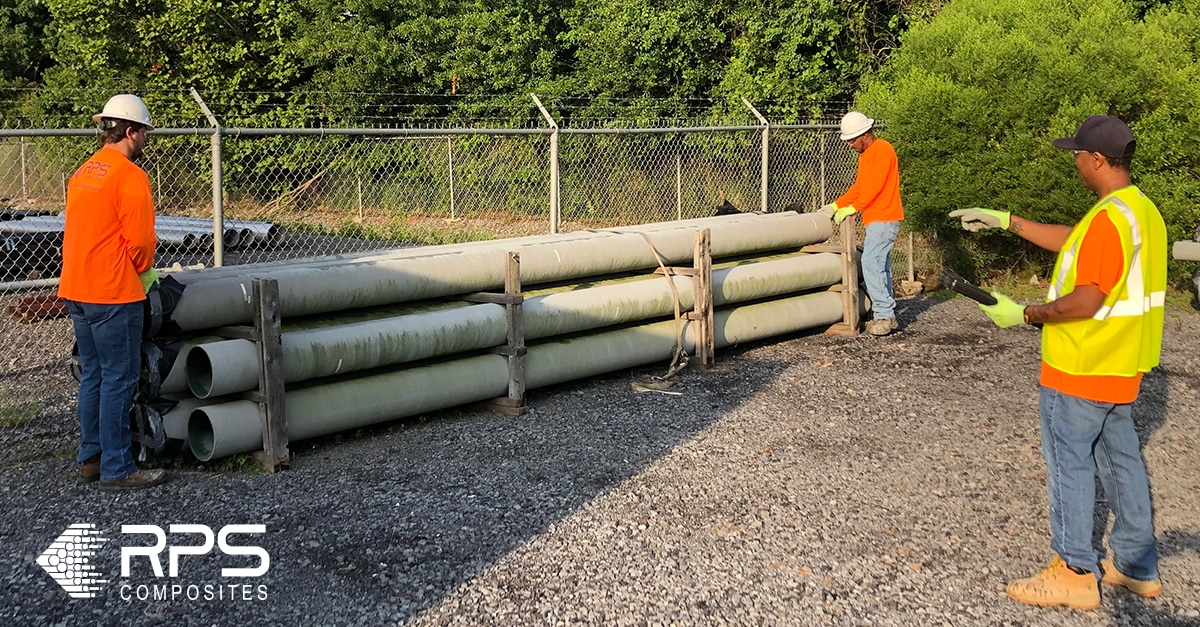In the realm of industrial piping systems, the choice between materials is crucial for ensuring long-term efficiency and durability. Two heavyweight contenders in this arena are fiberglass reinforced plastic (FRP) piping systems and traditional steel piping systems. Beyond considerations of corrosion resistance, total lifetime cost, and lifespan, one often overlooked factor plays a significant role: the weight of the piping material itself.
Navigating the Weighty Decision
In this blog post, we review the favorable weight difference offered by FRP over steel, shedding light on how this choice of material can have major implications for industrial operations.
Let’s establish a fundamental understanding of the materials in question.
FRP Piping Systems:
- A combination of fiberglass and resin.
- Renowned for high corrosion resistance.
- Relatively low maintenance requirements.
Steel Piping Systems:
- Traditionally made of carbon steel or stainless steel.
- Strong and durable, some steel is susceptible to corrosion.
- High pressure and high temperature handling capabilities.
Favorable FRP Pipe Weight
The weight of a piping system can impact various aspects of its installation, transportation, and overall performance.
FRP piping offers considerable installation ease. The material is lighter and will decrease the burden not only on original installation teams, but on future maintenance / replacement teams. The decreased weight will also reduce the need for heavy lift equipment, special equipment operators, and certifications which can save both time and costs.
Transportation management is another area where it pays to invest in lighter, non-metallic pipe and tank systems like FRP and dual laminate. These lighter materials will reduce your logistics and transportation costs, and ease handling during loading and unloading.
Quantifying the Weight Differential
Even the most thin-walled stainless steel product is capable of meeting the pressure rating (150 psi) of standard RPS Composites piping systems, so for this comparison we are using only Schedule 5S. Both 304L and 316L material offer good corrosion resistance, particularly 316L. We offer below one small dia. and one large dia. pipe as examples:
| Weight | |||||
| ID | Stainless Steel1 | RPS HPPE P-150 |
RPS HPPE A-150 |
RPS HPPE H-150 |
RPS HPPE H-150-200 |
| 4-inch | 3.9 lbs. / ft | 2.3 lbs. / ft | 2.3 lbs. / ft | 2.3 lbs. / ft | 3.8 lbs. / ft |
| 12-inch | 20.9 lbs. / ft | 12.4 lbs. / ft | 12.4 lbs. / ft | 12.4 lbs. / ft | 16.2 lbs. / ft |
In the intricate world of industrial piping systems, there are numerous variables that determine materials of construction, and the weight of materials should be one of them.
This exploration has shed light on the often-overlooked weight difference between steel and FRP piping systems, providing industry professionals with additional considerations for decision-making.
For additional RPS HPPE pipe dimensions, visit our Resources page and scroll to the various Piping technical bulletins.
If we can assist with your next dual laminate / FRP pipe and tank project, please Contact Us.
1 Source

